Hi there! I’m Lou, and today I’m thrilled to take you on a journey through Lego’s bold transformation towards gender inclusivity. This post explores how Lego initially reinforced traditional gender roles with their sets and the key turning points that led to a more inclusive approach. You’ll learn about the legal and social pressures that influenced these changes, the passionate advocacy from the Lego community, and the strategic steps Lego has taken to create diverse and representative toys. We’ll get into global perspectives, legal battles, and testimonials from parents, teachers, and children. By the end, you’ll see how Lego is reshaping the toy industry and promoting a fair, inclusive play environment for all kids.
Introduction: Lego’s journey towards gender inclusivity
In a world where toys are more than just playthings—they’re mirrors reflecting societal norms and shaping young minds—Lego, an iconic brand celebrated across generations, has navigated a fascinating path marked by both praise and criticism. This article delves into the evolution of Lego’s journey towards gender inclusivity, exploring its profound influence on society and the determined steps taken to foster inclusivity. From its earliest days of superhero sets and construction-themed play predominantly targeted at boys, to the contemporary era of breaking gender norms, Lego’s transformation is a story that deserves a closer look.
Lego’s Past and Gender Stereotyping: A Snapshot of History
When I was growing up, Lego sets were predominantly designed for boys. They featured themes like police officers, firefighters, and construction workers, all typically portrayed as male figures. This reinforced the stereotype that construction and adventure were inherently masculine pursuits. As a result, many young girls were unintentionally marginalized, missing out on the imaginative play that transcended societal norms. These sets, while beloved, limited exposure to diverse narratives.
Shifting Perspectives and Legal Implications: Navigating New Territory
As awareness grew about the harmful effects of gender stereotypes on children, scrutiny of Lego’s impact on young minds increased. Legal experts and various studies highlighted how these stereotypes influence children’s cognitive and emotional development. For instance, kids exposed to gender-stereotyped toys often internalize these roles, affecting their future career aspirations and self-esteem. This growing awareness led to widespread calls for Lego to change its approach to toy design and marketing.
The Lego Community’s Impact: Voices for Change
As concerns about gender representation in toys grew, the Lego community—comprising adult fans, parents, and educators—became a driving force for change. They passionately advocated for more inclusive and diverse Lego sets. Lively discussions on social media and fan forums highlighted the need for Lego sets representing a broader range of professions and interests. These community voices were instrumental in steering Lego towards creating narratives that resonate with every child, regardless of gender.
Government Interventions and Support Groups: A Call for Accountability
Government and regulatory bodies began to notice the growing concern over gender stereotypes. This sparked discussions about the need for legal actions to protect children from harmful stereotypes. Support groups focusing on gender equality also engaged with Lego, pushing the company to rethink its product development and marketing strategies. For instance, a petition calling for more female scientists and explorers in Lego sets garnered thousands of signatures, showing the public’s demand for change.
Lego’s Comprehensive Corrective Action Plan: Steps towards Inclusivity
In response to increasing pressure and evolving perspectives, Lego developed a comprehensive action plan to combat gender stereotypes. This plan involved revisiting existing product lines, creating characters that defied traditional gender roles, and collaborating with child psychologists to design sets that foster cognitive development, creativity, and gender-neutral play. For example, the“Hidden Side” series (view on Amazon) introduced diverse characters and encouraged collaborative play and problem-solving skills.
View more details of The Everyone is awesome LEGO set (on Amazon)
Steps Taken to Correct the Issues, Lego’s journey towards gender inclusivity
Lego’s journey towards gender inclusivity involved a series of strategic steps that extended beyond product development. The brand diversified its theme sets, incorporating fields like science, art, and literature. Collaborations with organizations focused on diversity and inclusion allowed Lego to gain insights that informed their product development process. For example, a partnership with a children’s rights organization led to the creation of sets depicting young activists from various backgrounds, inspiring children to explore their potential beyond stereotypes.
Global Impact: Influence from Other Countries and Legal Implications
Lego’s journey towards inclusivity and dismantling gender stereotypes isn’t confined to a single nation—it’s a global conversation that transcends borders and cultures. Different countries have played a pivotal role in shaping the discourse around gender representation in toys, influencing not only Lego’s approach but also the broader societal landscape.
Government Interventions and Support Groups: A Call for Accountability
In Lego’s Bold Journey: From Gender Stereotypes to Inclusive Play, the intensifying concern over gender stereotypes caught the attention of governments and regulatory bodies. California’s recent law mandating gender-neutral toy aisles in large retailers is a significant step towards dismantling traditional gender norms. This groundbreaking legislation not only addresses the immediate issue but also sets a precedent for other states and countries around the world to follow. The law mandates that large retail stores with over 500 employees create gender-neutral sections to offer a more inclusive shopping experience for children.
Promoting Inclusivity and Challenging Stereotypes: A Global Perspective
This move, inspired by an 8-year-old questioning the division of “boys’” and “girls’” toys, aims to foster an environment where children can freely express themselves without being confined by societal expectations. The law also imposes penalties for non-compliance, signaling a strong commitment to its enforcement. Critics argue about potential infringements on free speech and corporate autonomy, but the overarching goal is to promote inclusivity and challenge outdated stereotypes.
Expanding Gender-Neutral Toy Aisles Worldwide
California’s initiative should be looked at closely for further expansion in other states and countries. As the toy industry evolves, adopting similar measures globally can contribute to a more inclusive and equitable world for all children. The societal implications of such legislation are profound, encouraging other regions to consider how they can implement changes that promote gender inclusivity in toys and beyond.
For more details on California’s gender-neutral toy aisle law, check out this article:
California’s Gender-Neutral Toy Aisles: Legal Dimensions and Societal Impact
International perspectives on gender representation
Around the world, countries are taking their own unique approaches to addressing gender representation in toys. In Sweden, for instance, the concept of “gender-neutral” playrooms gained traction, challenging traditional ideas of what toys are suitable for boys and girls. Norway introduced legislation encouraging retailers to avoid segregating toys by gender, fostering a more inclusive shopping experience. These global shifts reflect a growing recognition that children should be exposed to a diverse range of interests and activities, regardless of gender.
Legal Battles and Transformative Outcomes of Lego’s journey towards gender inclusivity
While Lego has been at the forefront of change, other companies have also faced legal battles surrounding gender representation in products. In one notable case, a toy company faced a lawsuit over a similar product that reinforced gender stereotypes. The lawsuit alleged that the product’s marketing and design perpetuated harmful norms. The outcome of this case was a turning point: the company was required to reevaluate its marketing strategies and product design, resulting in a noticeable shift towards more gender-neutral themes.
Impact on Society and Manufacturing: Lego’s journey towards gender inclusivity
Legal actions against gender-stereotyped products have had a ripple effect on society and manufacturing practices. As companies become more mindful of the consequences of perpetuating stereotypes, they are forced to reassess their approach to product development and marketing. These shifts are indicative of a broader transformation in societal attitudes, as consumers demand more inclusive options for their children.
The Domino Effect: Transforming the Toy Industry
The changes initiated by these legal battles and global shifts are extending beyond individual companies and products. Toy manufacturers across the board are taking note of the evolving landscape, adjusting their offerings to reflect a more diverse range of interests and characters. This transformation is evident in the introduction of gender-neutral toy lines, as well as the inclusion of characters from different backgrounds and abilities.
Society’s Changing Values, Lego’s journey towards gender inclusivity
As legal cases and global movements continue to drive change, the landscape of gender representation in toys is experiencing a seismic shift. Society’s values are evolving, and as a result, manufacturing practices are being influenced. Companies are recognizing the power they hold in shaping young minds and are using it to promote diversity and inclusivity. The impact extends beyond the realm of play—it’s about nurturing a generation that values equality and embraces individuality.
The Road Ahead: Lego’s journey towards gender inclusivity
Lego’s journey from perpetuating gender stereotypes to becoming a beacon of inclusivity is both inspiring and ongoing. As the brand continues to adapt and learn, its commitment to fostering creativity, curiosity, and open-mindedness remains steadfast. Through collaborations, partnerships, and an unwavering resolve to create change, Lego serves as a powerful reminder that the toy industry has the potential to shape a more equitable and empowering future for generations to come.
The Importance of Creative Expression with Lego Play
Creative expression through Lego play is essential for children’s cognitive and emotional development. Engaging in constructive play with building blocks like Lego has been shown to enhance spatial awareness, problem-solving skills, and overall cognitive flexibility. According to a study by the University of Cambridge, playful learning activities significantly support children’s development, sometimes even more effectively than traditional, teacher-led methods.
For more detailed information, you can read the University of Cambridge article on learning through guided play.
By fostering creativity and encouraging diverse forms of play, Lego helps children develop essential skills while breaking down gender stereotypes. This approach not only nurtures creativity but also promotes inclusivity and acceptance from a young age. For additional insights, check out the detailed review on the role of play in children’s development from the white paper article.
Testimonials: Voices on LEGO’S journey towards gender inclusivity
I wanted to share some heartfelt testimonials from those who have witnessed the impact of LEGO’s journey towards gender inclusivity firsthand. These stories highlight the profound changes LEGO has brought to the lives of many, making the world of play more inclusive and inspiring.
A Parent’s Perspective
“As a parent, I’ve seen the difference inclusive LEGO sets have made for my daughter. She used to shy away from building sets because they didn’t resonate with her. Now, with sets featuring female scientists and diverse characters, she’s more engaged than ever. It’s amazing to watch her confidence grow as she builds and imagines without limitations. LEGO has truly helped her see that she can be anything she wants to be.” – Laura M., Parent
Source: Jay’s Brick Blog
An Educator’s Insight
“As a teacher, I use LEGO sets to encourage creativity and teamwork in my classroom. The inclusive sets have been a game-changer. My students, both boys and girls, love building scenes that reflect their diverse interests and backgrounds. It’s heartening to see them collaborate and break down gender stereotypes through play. LEGO’s commitment to inclusivity has made my job easier and my classroom a more welcoming place for all students.” – Mr. Thompson, Elementary School Teacher
Source: The New York Times
A Child’s Transformation
“Hi, I’m Sam. I used to think LEGO was just for boys, but then I got the ‘Everyone is Awesome’ set for my birthday. It’s so colorful, and I love that it celebrates everyone. Building it made me feel included and proud of who I am. Now, I’m always excited to see what new sets LEGO will come out with next!” – Sam, 10 years old
Source: The Guardian
These testimonials underscore the positive impact of LEGO’s shift towards inclusivity, reflecting a broader societal change. By fostering creativity and promoting diversity, LEGO continues to inspire children and adults alike to dream big and build a world where everyone is welcome.
In conclusion: Lego’s journey towards gender inclusivity
Lego’s transformation resonates as a testament to its responsiveness to societal shifts and its dedication to nurturing every child’s potential. As we reflect on Lego’s journey, we recognize that dismantling gender stereotypes requires consistent effort, perpetual learning, and an unyielding commitment to progress. Lego stands as a reminder that, indeed, every brick can pave the way for a brighter, more inclusive world. The journey towards representation and equality is ongoing, and Lego continues to lead the way with innovation, compassion, and an unbreakable spirit.
About the Author: Fostering Gender Inclusivity in Lego’s Bold Journey
Lou, the founder of Lou’s Bricks House, has a lifelong connection with LEGO. As a child with ADHD, Lou found focus and calmness through building with LEGO bricks, which ignited a passion for creativity and engineering. Now a parent to ten children, including those with autism, Lou’s family life is a testament to gender inclusivity and diversity. Fully supported by their siblings, Lou’s children represent the broad spectrum of gender inclusivity. In Lego’s Bold Journey: From Gender Stereotypes to Inclusive Play, Lou shares personal insights and experiences, highlighting the importance of inclusivity in toys. Through Lou’s Bricks House, Lou combines personal stories, parenting wisdom, and a dedication to promoting inclusive and creative play with LEGO.
Read more about Lou’s journey
More Great blogs for you, Don’t miss out!
Guide to Tax Deductions & Insurance Coverage for LEGO Therapeutic Toys
Explore how LEGO therapy can be an effective tool for various conditions like autism and ADHD, and how you can claim tax deductions or insurance benefits for its use. This guide walks you through the process, offering step-by-step tips and real-life success stories. Learn more in Guide to Tax Deductions & Insurance Coverage for LEGO Therapeutic Toys.
LEGO Sustainable Innovations: Shaping Our Planet’s Future
Discover how LEGO is transforming its iconic bricks with eco-friendly materials and renewable energy practices. From sustainable packaging to reducing their carbon footprint, LEGO is building a greener tomorrow for the next generation of creators. Learn more in LEGO Sustainable Innovations: Shaping Our Planet’s Future.
Violence and Aggression in the World of Lego
Explore the contentious topic of violence and aggression in Lego sets, and its impact on the brand and community. How does Lego balance creative freedom with responsible play? Read more in “Violence and Aggression in the World of Lego.”
Lego Christmas Gift Ideas: For All Ages & Genders
Step into the festive season with Lou’s Bricks! Our Lego Christmas Gift Ideas for All Ages & Genders are not just toys; they’re gateways to creativity and learning, all backed by science. Get set for a holiday brimming with imaginative play and emotional growth!
Autism Guide For Parents – Building Skills with Lego
In this article we explore how LEGO can transform playtime for children on the autism spectrum. Our guide uncovers how LEGO enhances fine motor skills, cognitive functions, creativity, and social interaction. Get into our Autism Guide for Parents and discover how every LEGO brick can build a brighter future for your child!
I hope you enjoyed your Journey with me on a Topic Worthy Of Discussion
Thank you for taking the time to explore “Lego’s Bold Journey: From Gender Stereotypes to Inclusive Play.” At Lou’s Bricks House. I hope you found the insights into Lego’s transformative journey as fascinating as I did. Your thoughts and experiences are incredibly valuable to me—how do you see the impact of gender inclusivity in toys? Have you noticed changes in the way children play and interact with LEGO? Please share your comments or questions below and join the conversation. Let’s continue to build a more inclusive world, one brick at a time!
Lou@lousclassicbrickshouse.com
Affiliate Disclosure
As an Amazon Associate, I earn from qualifying purchases. This means that if you click on an Amazon link on this site and make a purchase, I may receive a small commission at no additional cost to you.
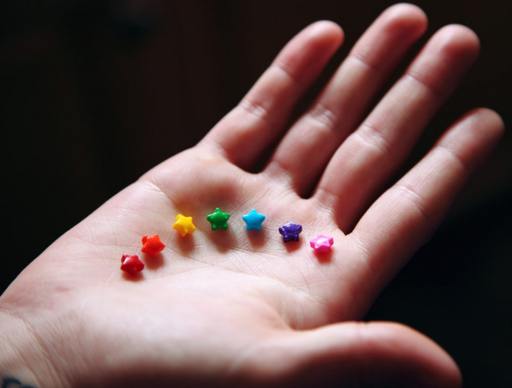
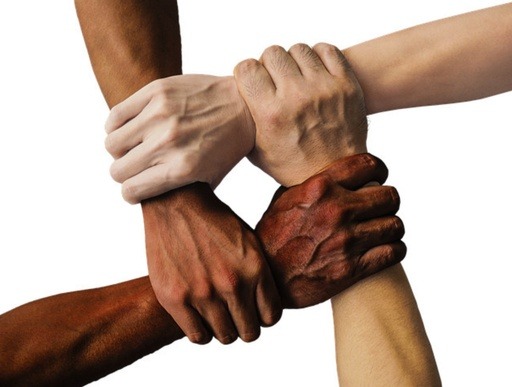
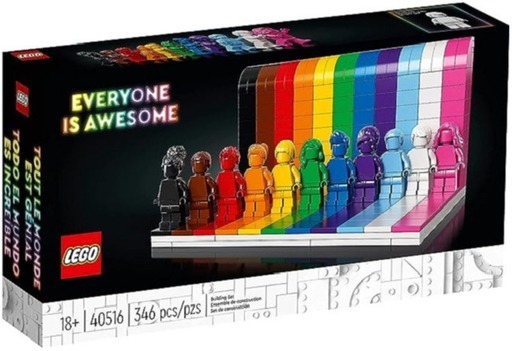
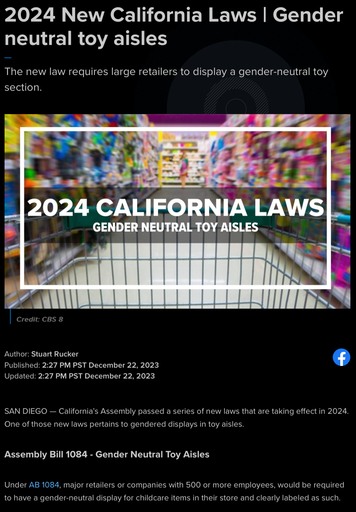
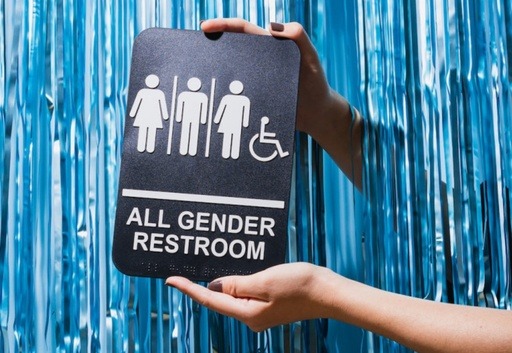

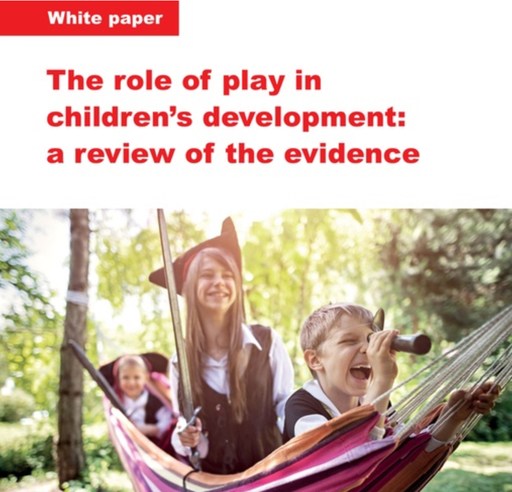
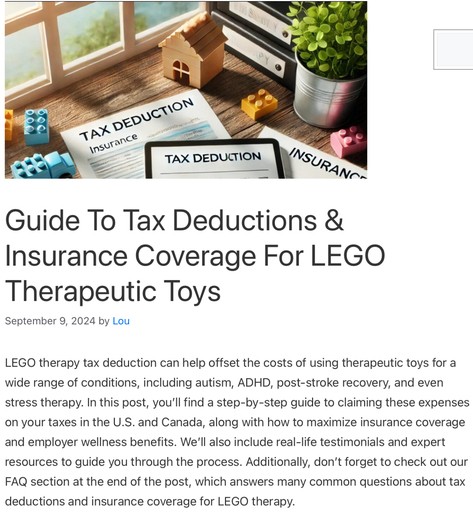
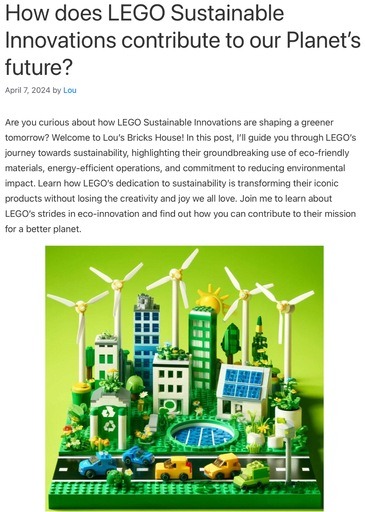
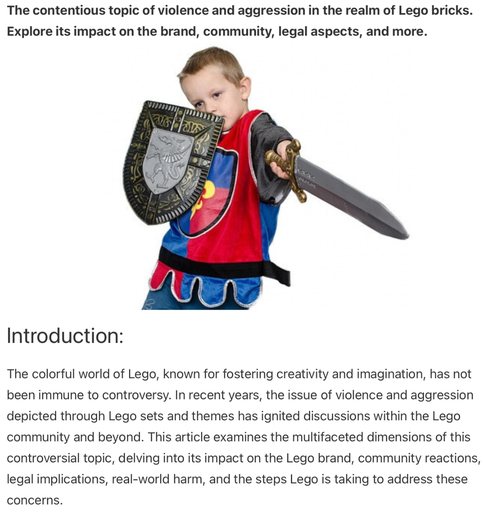

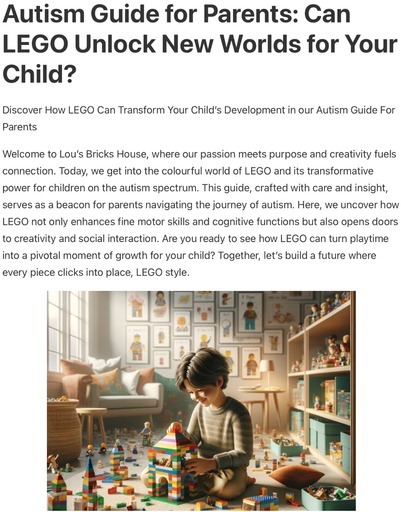
Hello Lou, I really enjoyed reading this article, I have a collection of succulent and plant adult legos and my five year old has the classic set! The historical context you provided on how LEGO has evolved over the years to be more inclusive was both informative and engaging! As a younger Child I’ve noticed that LEGO was mostly catered to Boys and I wanted to play with them growing up but the appeal was not there. Now as an adult and parent I really appreciate what LEGO has done to take the steps and make LEGO more inclusive broadening the appeal for all genders. This makes me feel confident and that LEGO can be a Great choice for anyone and it’s totally obvious. Overall, your article is well-researched and provides great insights. Lou’s Bricks House is a great concept with the inception of metal health and LEGO. As a parent it’s these types of websites that really offer great insights and not just promote a toy but offers valuable information. Thank you for sharing
Jessica.
Hi Jessica,
Thank you so much for your thoughtful comment! It’s wonderful to hear that both you and your little one are enjoying LEGO sets—those succulent and plant LEGO sets are such a creative twist for adults, and the classic sets are perfect for sparking imagination in kids. LEGO’s journey towards inclusivity has been quite remarkable, and it’s great to see how these changes are making an impact for families like yours.
As a parent, your perspective is invaluable, especially when it comes to how LEGO is evolving to appeal to everyone. It’s heartening to know that you feel confident in choosing LEGO for your child, knowing that it’s a toy that now speaks to all genders. That’s a big part of why I enjoy writing about LEGO’s connection to mental health and inclusivity, theres so much more to LEGO than most people think.
If there’s anything specific you’d like to see more of, or if there’s a topic you’d love to get into, please don’t hesitate to reach out. I’d love to hear your thoughts and have a deeper conversation about it!
Thanks again for your support, Jessica.
Lego Lou.
Thank you for this enlightening article. I have 2 questions for you.
The article mentions the role of the community in advocating for change. Can you provide more details about specific campaigns or voices within the community that played a pivotal role in this transformation?
How have government interventions, such as California’s gender-neutral toy aisle law, influenced your approach to inclusivity? Are there other similar legislations globally that have had a comparable impact?
Hi Raymond! Great questions, but that’s more than two questions, haha. Just to clarify, while researching this topic, I discovered that it’s much bigger than meets the eye. My personal experiences with the topic are the driving force that encouraged me to explore this subject—not only for a better understanding but to provide valuable information to others like me who have struggled to grasp the complexities. This understanding is crucial for supporting loved ones and fostering the equality they deserve.
To address your first question about community advocacy: The Lego community, especially passionate fans, parents, and educators, has been instrumental in driving change. Campaigns like the #LEGOForAll movement highlighted the need for more diverse and inclusive sets. Influential voices like that of Dr. Gina Gomez de la Cuesta, who pioneered LEGO-based therapy, have been pivotal. Her work, alongside others, emphasized the importance of inclusive play for children’s development.
Regarding government interventions: California’s gender-neutral toy aisle law has been a significant influence. This law mandates large retailers to create gender-neutral sections, aiming to break down traditional gender stereotypes. It has set a precedent for other states and countries to follow. Similar legislation can be seen in places like Sweden and Norway, where there is a strong push for gender-neutral marketing of toys. These laws have encouraged companies like LEGO to rethink their approach and ensure their products promote inclusivity.
I hope this helps answer your questions. If you have any more, please feel free to reach out. Thank you, and happy building!
Lou
I had no idea about the depth of Lego’s journey towards gender inclusivity until reading this post. It’s incredible to see how Lego has evolved from reinforcing gender stereotypes to promoting inclusive play. This milestone is significant for such a broad brand. When I played Lego with my daughter and her friends, I never noticed any negative emotions related to gender, but I wasn’t aware of the broader issues. As a child, I remember thinking Lego was for boys, to the point where I wouldn’t let my sister join in. Now, it’s amazing to see the progress towards gender inclusivity. This change allows for a more inclusive environment for all genders. Now, when this topic comes up with my astute young helper, I can engage more knowledgeably. Thank you for this enlightening and must-read article!
Hi Robby,
Thank you so much for your thoughtful comment on “Lego’s Bold Journey: From Gender Stereotypes to Inclusive Play.” It’s wonderful to hear that the post shed some light on Lego’s significant steps towards gender inclusivity for you. Like you, I also found it surprising and inspiring to learn about the depth of their efforts.
It’s interesting to reflect on our own experiences with Lego. I remember similar sentiments from my childhood, where Lego was seen predominantly as a boys’ toy. It’s heartening to see how far we’ve come, with Lego now fostering an environment that promotes inclusivity and creativity for all children, regardless of gender. Your experience with your daughter and her friends highlights just how important these changes are, ensuring that everyone feels included and valued.
I’m glad that the post has given you more insight to engage in meaningful conversations about gender inclusivity with your young helper. It’s through these dialogues that we continue to build a more inclusive world.
Thank you for your kind words and for being a part of this important discussion. If you have any further thoughts or questions, please feel free to share them. Together, let’s keep exploring and supporting inclusive play!
Warm regards,
Lou
Seeing Lego’s journey towards inclusive representation is both inspiring and thought-provoking. It highlights the significant impact that toys and playthings can have on shaping societal norms and young minds. Lego’s transformation from perpetuating gender stereotypes to becoming a beacon of inclusivity is a testament to the power of listening to the concerns of the community and taking meaningful action.
It’s heartening to see how companies like Lego are driving positive change and fostering a more equitable future
Matias, your comment beautifully captures the essence of Lego’s transformation towards inclusive representation. It’s truly remarkable to witness the evolution of a brand that has embraced change and taken steps to challenge traditional gender stereotypes. The influence of toys and playthings on shaping societal norms cannot be underestimated, and Lego’s journey serves as a powerful reminder of this fact.
Lego’s commitment to inclusivity reflects a broader shift in the corporate landscape, where companies are recognizing the importance of listening to their communities and responding with meaningful action. This proactive approach not only demonstrates a willingness to adapt but also showcases the potential to create a more equitable future for all.
It’s heartening to know that companies like Lego are actively contributing to positive change and setting an example for others to follow. Their dedication to fostering inclusivity serves as an inspiration to us all, reminding us that even the smallest steps can lead to significant progress.
Thank you for sharing your thoughts on this matter. Your comment adds depth to the conversation and highlights the positive impact that collective efforts can bring about.
Lou
I agree with you that consistent effort and continuous learning will help desmantle gender stereotype. Every where there is gender discrimination growth is impaired. In sports, games, and even in politics gender inclusion has become a topic of concern. The girl child is as intelligent as the male. And both needs to be given equal opportunity in every sector
Absolutely, Parameter. Your insights are spot on. Addressing gender stereotypes and promoting inclusivity is essential across all aspects of society, including sports, games, and politics. Equal opportunity is crucial for both genders to thrive and contribute their unique talents and abilities. LEGO’s commitment to challenging gender stereotypes in play is a step in the right direction, and by fostering inclusive representation, we can help create a world where everyone has the chance to reach their full potential, regardless of gender.
Lou
Thanks for sharing. I really enjoyed reading your article about LEGO’s journey toward inclusive representation and breaking gender stereotypes. It’s heartening to see a toy company taking steps to promote diversity and equality in play.
I’m curious to know, what other initiatives or products do you think LEGO can develop to further encourage inclusive play and challenge stereotypes?
Absolutely, Kiersti. LEGO has already taken significant steps to promote inclusivity and challenge stereotypes through their products. They’ve been creating diverse minifigures, developing themed sets that celebrate different cultures, collaborating with organizations, and incorporating inclusive storytelling. These efforts encourage children to engage in inclusive play and foster understanding. As LEGO continues on this journey, we can expect to see even more initiatives that promote diversity, equality, and empowerment in their products and play experiences.
Lou